AI Agriculture
Artificial Intelligence (AI) in agriculture refers to using machine learning algorithms and other AI technologies to analyze data and make predictions and recommendations related to agricultural operations1. Farmers use AI for methods such as precision agriculture, which can monitor crop moisture, soil composition, and temperature in growing areas, enabling farmers to increase their yields by learning how to take care of their crops and determine the ideal amount of water or fertilizer to use. AI can provide farmers with real-time insights from their fields, allowing them to identify areas that need irrigation, fertilization, or pesticide treatment.
Artificial Intelligence (AI) can also help farmers reduce waste and improve sustainability by analyzing data on water usage, fertilizer application, and other resources, reducing waste and minimizing their environmental impact. AI has the ability to transform 21st century agriculture by increasing efficiency of time, labor, and resources, improving environmental sustainability, and making resource allocation “smarter”. AI has improved crop production and real-time monitoring, harvesting, processing, and marketing, saving the agriculture sector from different factors such as climate change, population growth, employment issues, and food safety.
Benefits
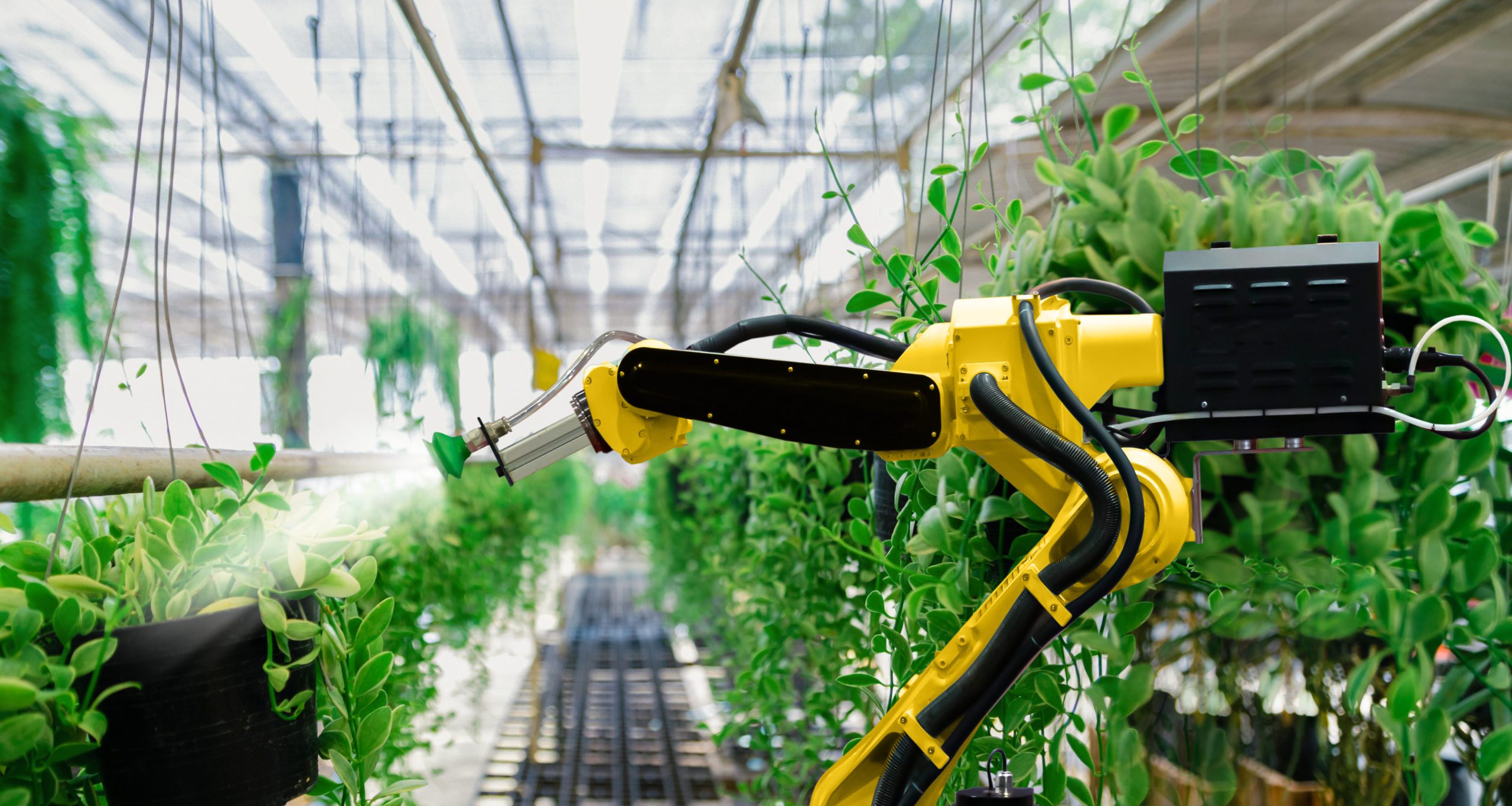 Until recently, using the words Artificial Intelligence (AI) and agriculture in the same sentence may have seemed like a strange combination. After all, agriculture has been the backbone of human civilization for millennia, providing sustenance as well as contributing to economic development, while even the most primitive AI only emerged several decades ago.
Nevertheless, innovative ideas are being introduced in every industry, and agriculture is no exception. In recent years, the world has witnessed rapid advancements in agricultural technology, revolutionizing farming practices.
These innovations are becoming increasingly essential as global challenges such as climate change, population growth together with resource scarcity threaten the sustainability of our food system. Introducing AI solves many challenges and helps to diminish many disadvantages of traditional farming.
Until recently, using the words Artificial Intelligence (AI) and agriculture in the same sentence may have seemed like a strange combination. After all, agriculture has been the backbone of human civilization for millennia, providing sustenance as well as contributing to economic development, while even the most primitive AI only emerged several decades ago.
Nevertheless, innovative ideas are being introduced in every industry, and agriculture is no exception. In recent years, the world has witnessed rapid advancements in agricultural technology, revolutionizing farming practices.
These innovations are becoming increasingly essential as global challenges such as climate change, population growth together with resource scarcity threaten the sustainability of our food system. Introducing AI solves many challenges and helps to diminish many disadvantages of traditional farming.
Data-based decisions
 The modern world is all about data. Organizations in the agricultural sector use data to obtain meticulous insights into every detail of the farming process, from understanding each acre of a field to monitoring the entire produce supply chain to gaining deep inputs on yields generation process. AI-powered predictive analytics is already paving the way into agribusinesses.
Farmers can gather, then process more data in less time with AI. Additionally, AI can analyze market demand, forecast prices as well as determine optimal times for sowing and harvesting.
Artificial intelligence in agriculture can help explore the soil health to collect insights, monitor weather conditions, and recommend the application of fertilizer and pesticides. Farm management software boosts production together with profitability, enabling farmers to make better decisions at every stage of the crop cultivation process.
The modern world is all about data. Organizations in the agricultural sector use data to obtain meticulous insights into every detail of the farming process, from understanding each acre of a field to monitoring the entire produce supply chain to gaining deep inputs on yields generation process. AI-powered predictive analytics is already paving the way into agribusinesses.
Farmers can gather, then process more data in less time with AI. Additionally, AI can analyze market demand, forecast prices as well as determine optimal times for sowing and harvesting.
Artificial intelligence in agriculture can help explore the soil health to collect insights, monitor weather conditions, and recommend the application of fertilizer and pesticides. Farm management software boosts production together with profitability, enabling farmers to make better decisions at every stage of the crop cultivation process. Cost savings
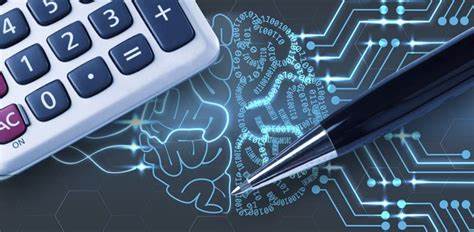 Improving farm yields is a constant goal for farmers. Combined with AI, precision agriculture can help farmers grow more crops with fewer resources. AI in farming combines the best soil management practices, variable rate technology, and the most effective data management practices to maximize yields while minimizing minimize spending.
Application of AI in agriculture provides farmers with real-time crop insights, helping them to identify which areas need irrigation, fertilization, or pesticide treatment. Innovative farming practices such as vertical agriculture can also increase food production while minimizing resource usage. Resulting in reduced use of herbicides, better harvest quality, higher profits alongside significant cost savings.
Improving farm yields is a constant goal for farmers. Combined with AI, precision agriculture can help farmers grow more crops with fewer resources. AI in farming combines the best soil management practices, variable rate technology, and the most effective data management practices to maximize yields while minimizing minimize spending.
Application of AI in agriculture provides farmers with real-time crop insights, helping them to identify which areas need irrigation, fertilization, or pesticide treatment. Innovative farming practices such as vertical agriculture can also increase food production while minimizing resource usage. Resulting in reduced use of herbicides, better harvest quality, higher profits alongside significant cost savings. 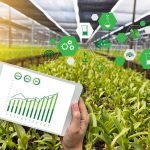


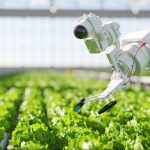
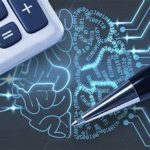
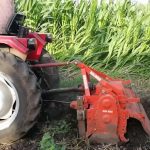
Automation impact
 Agricultural work is hard, so labor shortages are nothing new. Thankfully, automation provides a solution without the need to hire more people. While mechanization transformed agricultural activities that demanded super-human sweat and draft animal labor into jobs that took just a few hours, a new wave of digital automation is once more revolutionizing the sector.
Automated farm machinery like driverless tractors, smart irrigation, fertilization systems, IoT-powered agricultural drones, smart spraying, vertical farming software, and AI-based greenhouse robots for harvesting are just some examples. Compared with any human farm worker, AI-driven tools are far more efficient and accurate.
Agricultural work is hard, so labor shortages are nothing new. Thankfully, automation provides a solution without the need to hire more people. While mechanization transformed agricultural activities that demanded super-human sweat and draft animal labor into jobs that took just a few hours, a new wave of digital automation is once more revolutionizing the sector.
Automated farm machinery like driverless tractors, smart irrigation, fertilization systems, IoT-powered agricultural drones, smart spraying, vertical farming software, and AI-based greenhouse robots for harvesting are just some examples. Compared with any human farm worker, AI-driven tools are far more efficient and accurate. AI in Agriculture
globally 2023 -2030
($ Billion) AI in agriculture market
0
($ Billion) spending on AI Agriculture
0
Applications
Traditional farming involves various manual processes. Implementing AI models can have many advantages in this respect. By complementing already adopted technologies, an intelligent agriculture system can facilitate many tasks. AI can collect and process big data, while determining and initiating the best course of action. Here are some common use cases for AI in agriculture:
Crop and soil monitoring
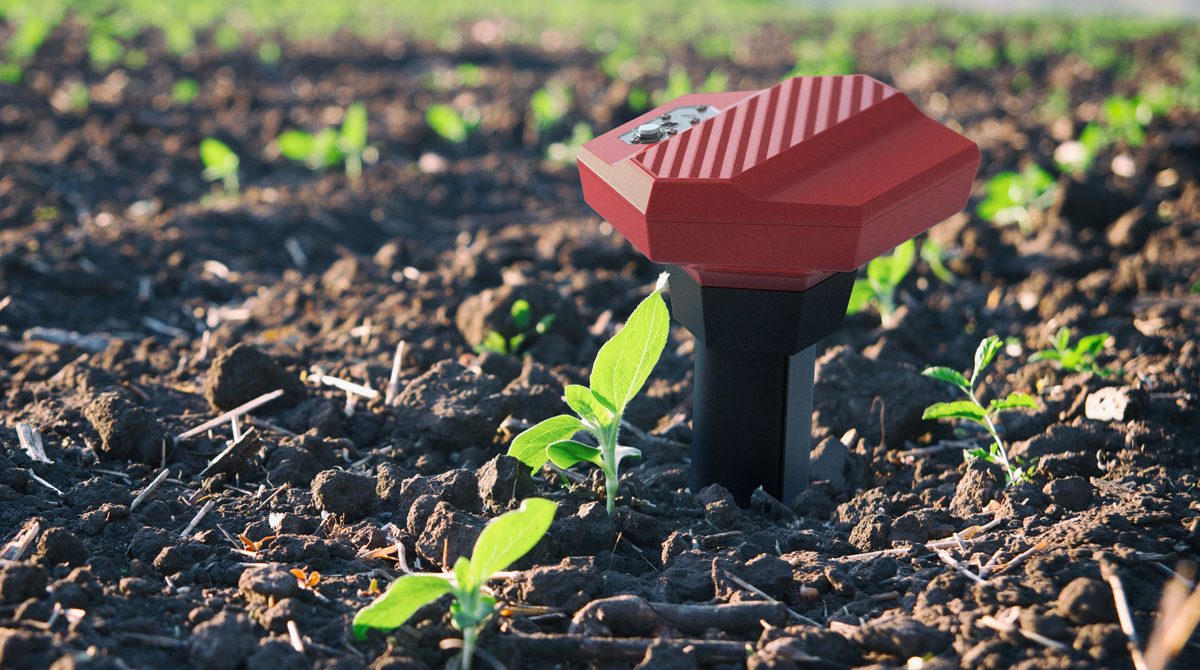 Micro and macronutrients in the soil are critical factors for crop health and both the quantity and quality of yield.
Then, once crops are in the soil, monitoring the stages of growth is also essential to optimizing production efficiency. It’s vital to understand interactions between crop growth and the environment in order to make adjustments for improved crop health.
Now, traditionally soil quality and crop health were determined by human observation and judgment. But this method is neither accurate nor timely.
Instead, we can now use drones (UAVs) to capture aerial image data, and train computer vision models to use this for intelligent monitoring of crop and soil conditions.
Visual sensing AI can analyze and interpret this data to:
track crop health; make accurate yield predictions; and
detect crop malnutrition much faster than humans.
AI models can inform farmers of specific problem areas so that they can take immediate action.
Now let’s look at some real examples of how computer vision is helping keep their crops healthy and productive.
Micro and macronutrients in the soil are critical factors for crop health and both the quantity and quality of yield.
Then, once crops are in the soil, monitoring the stages of growth is also essential to optimizing production efficiency. It’s vital to understand interactions between crop growth and the environment in order to make adjustments for improved crop health.
Now, traditionally soil quality and crop health were determined by human observation and judgment. But this method is neither accurate nor timely.
Instead, we can now use drones (UAVs) to capture aerial image data, and train computer vision models to use this for intelligent monitoring of crop and soil conditions.
Visual sensing AI can analyze and interpret this data to:
track crop health; make accurate yield predictions; and
detect crop malnutrition much faster than humans.
AI models can inform farmers of specific problem areas so that they can take immediate action.
Now let’s look at some real examples of how computer vision is helping keep their crops healthy and productive. Observing crop maturity
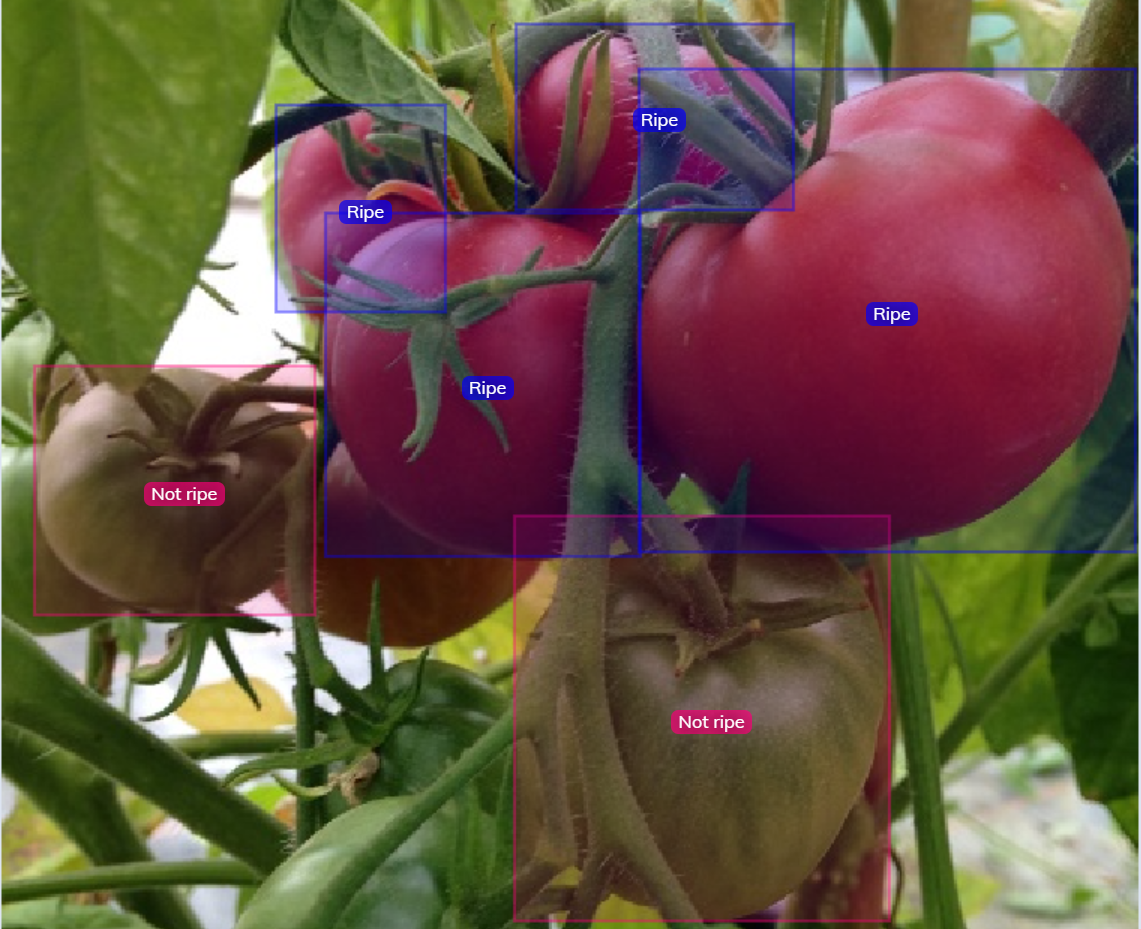 Manual observation of wheat head growth stages is just the kind of labor-intensive process that AI can help with in precision agriculture.
Researchers achieved this by collecting images of wheat at different “heading” stages across three years and in different lightings, which enabled them to create a “two-step coarse-to-fine wheat ear detection mechanism”.
This computer vision model was then able to outperform human observation in accurately identifying wheat growth stages, meaning that the farmers no longer had to make daily treks into the fields to examine their crop.
Another study examined how well computer vision can detect maturity in tomatoes. Researchers created an algorithm that analyzed color from five different parts of the tomato, and then made maturity estimates based on this data. The algorithm achieved a successful detection and classification rate of 99.31%.
Overserving and estimating crop growth and maturity is hard, labor-intensive work for farmers. But AI is proving capable of handling much of that work with both ease and impressive accuracy.
Manual observation of wheat head growth stages is just the kind of labor-intensive process that AI can help with in precision agriculture.
Researchers achieved this by collecting images of wheat at different “heading” stages across three years and in different lightings, which enabled them to create a “two-step coarse-to-fine wheat ear detection mechanism”.
This computer vision model was then able to outperform human observation in accurately identifying wheat growth stages, meaning that the farmers no longer had to make daily treks into the fields to examine their crop.
Another study examined how well computer vision can detect maturity in tomatoes. Researchers created an algorithm that analyzed color from five different parts of the tomato, and then made maturity estimates based on this data. The algorithm achieved a successful detection and classification rate of 99.31%.
Overserving and estimating crop growth and maturity is hard, labor-intensive work for farmers. But AI is proving capable of handling much of that work with both ease and impressive accuracy.
Hitting the Ground with Computer Vision
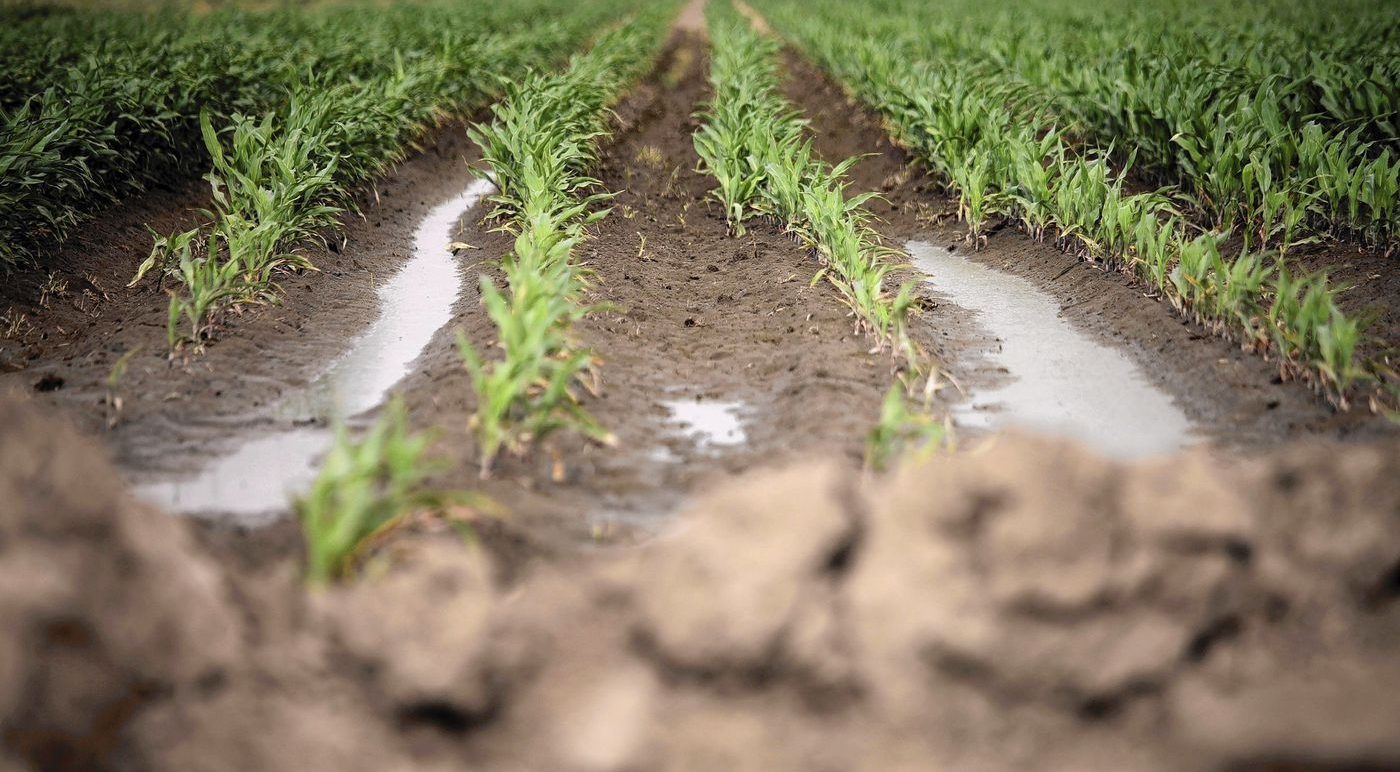 Another study set out to see how well computer vision can characterize soil texture and soil organic matter (SOM).
Ordinarily, evaluating soil requires farmers to dig up samples and bring them to a lab for time- and energy-intensive analysis. Instead, researchers decided to see if image data from an inexpensive handheld microscope could be used to train an algorithm to do the same thing.
Sure enough, the computer vision model managed to make sand content and SOM estimates with accuracy comparable to costly lab processing.
So, not only can computer vision eliminate a large amount of the difficult, manual labor involved in crop and soil monitoring, in many cases it does it more effectively than humans can.
Another study set out to see how well computer vision can characterize soil texture and soil organic matter (SOM).
Ordinarily, evaluating soil requires farmers to dig up samples and bring them to a lab for time- and energy-intensive analysis. Instead, researchers decided to see if image data from an inexpensive handheld microscope could be used to train an algorithm to do the same thing.
Sure enough, the computer vision model managed to make sand content and SOM estimates with accuracy comparable to costly lab processing.
So, not only can computer vision eliminate a large amount of the difficult, manual labor involved in crop and soil monitoring, in many cases it does it more effectively than humans can. Finding bugs with code
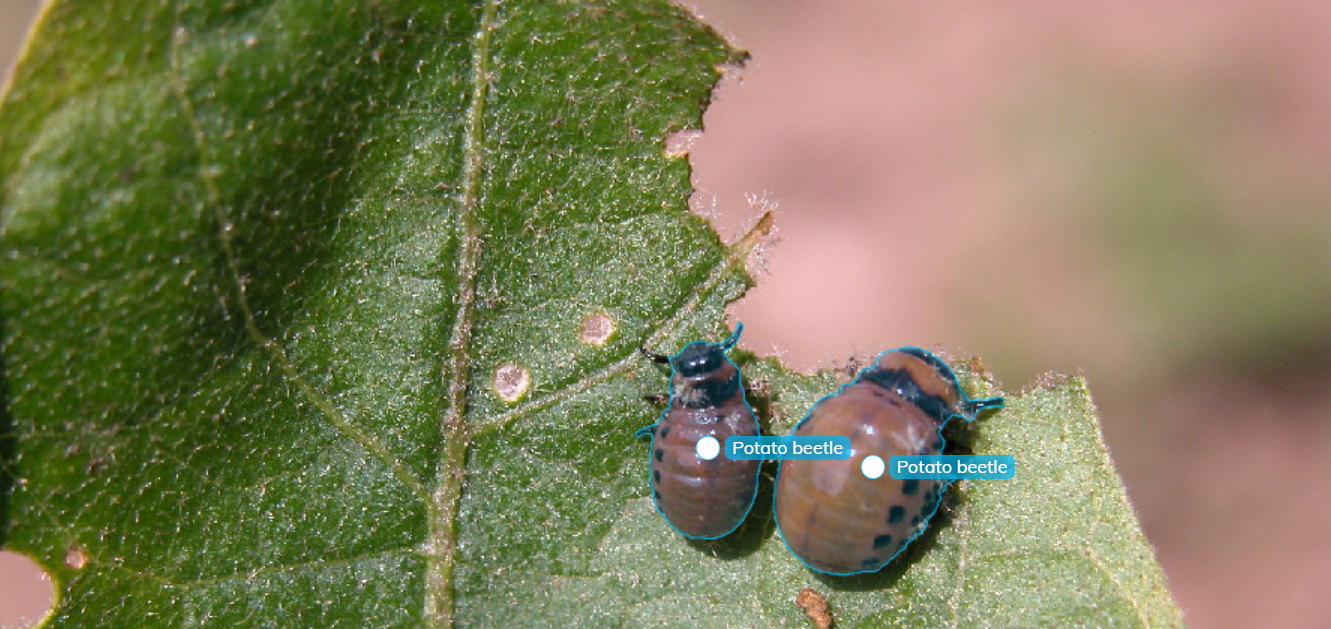 Researchers first set up a sticky trap to capture six different species of flying insect and collect real-time images. They then based the detection and coarse counting method on YOLO object detection, and the classification and fine counting on Support Vector Machines (SVM) using global features.
When all was said and done, their computer vision model was able to identify bees, flies, mosquitoes, moths, chafers, and fruit flies with an accuracy of 90.18%, and count them with 92.5% accuracy.
These studies show that the future of AI computer vision for monitoring the health of our food systems is promising. Not only can it reduce labor inefficiencies, but it can do so without sacrificing reliability of the observations.
Researchers first set up a sticky trap to capture six different species of flying insect and collect real-time images. They then based the detection and coarse counting method on YOLO object detection, and the classification and fine counting on Support Vector Machines (SVM) using global features.
When all was said and done, their computer vision model was able to identify bees, flies, mosquitoes, moths, chafers, and fruit flies with an accuracy of 90.18%, and count them with 92.5% accuracy.
These studies show that the future of AI computer vision for monitoring the health of our food systems is promising. Not only can it reduce labor inefficiencies, but it can do so without sacrificing reliability of the observations. 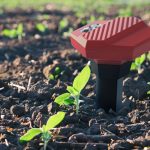
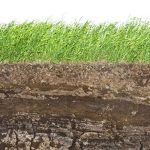
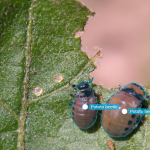
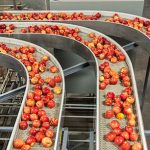
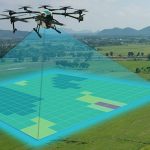
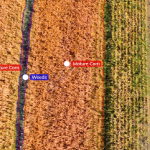
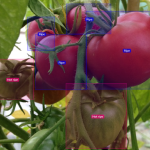

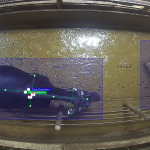
Livestock health monitoring
 Animals are another major component of our agriculture systems, and they tend to need a bit more tracking than plants. Can computer vision keep up with cows, chickens, and pigs on the move? Check out below how one of V7’s users—CattleEye’s training data allows for tracking and annotating of cattle using bounding boxes and key points.
CattleEye is a great example of an AI-first company in the agriculture industry. They use overhead cameras and computer vision algorithms to monitor cattle health and behavior.
This means that spotting a problem isn’t dependent on a cattle farmer being right there next to the cow. Instead, the cattle can be tracked and monitored remotely and in real-time so that farmers can be notified as soon as a problem is observed.
Computer vision can also:
Count animals, detect disease, identify unusual behavior, and monitor significant activities such as giving birth;
Collect data from cameras and drones (UAVs); and
Combine with other technologies to keep farmers informed on animal health and access to food or water.
In case, counting chikens, the algorithms are trained to look at video data and determine what the chickens are up to – whether they’re drinking, eating, sleeping, or doing something odd that may be indicative of disease or behavioral problems.
Animals are another major component of our agriculture systems, and they tend to need a bit more tracking than plants. Can computer vision keep up with cows, chickens, and pigs on the move? Check out below how one of V7’s users—CattleEye’s training data allows for tracking and annotating of cattle using bounding boxes and key points.
CattleEye is a great example of an AI-first company in the agriculture industry. They use overhead cameras and computer vision algorithms to monitor cattle health and behavior.
This means that spotting a problem isn’t dependent on a cattle farmer being right there next to the cow. Instead, the cattle can be tracked and monitored remotely and in real-time so that farmers can be notified as soon as a problem is observed.
Computer vision can also:
Count animals, detect disease, identify unusual behavior, and monitor significant activities such as giving birth;
Collect data from cameras and drones (UAVs); and
Combine with other technologies to keep farmers informed on animal health and access to food or water.
In case, counting chikens, the algorithms are trained to look at video data and determine what the chickens are up to – whether they’re drinking, eating, sleeping, or doing something odd that may be indicative of disease or behavioral problems.
Intelligent spraying
 The equipment with computer vision AI makes it possible to automate spraying of pesticides or fertilizer uniformly across a field.
With real-time recognition of target spraying areas, sprayers are able to operate with high precision both in terms of the area and amount to be sprayed. This significantly reduces the risk of contaminating crops, humans, animals, and water resources.
While the potential here is great, currently some challenges still exist. For example, spraying a large field is much more efficient with multiple equipmwnts, but assigning specific task sequences and flight trajectories for individual crafts can be tricky.
Researchers from Virginia Tech have devised a smart spray system based on servo motor controlled sprayers that use computer vision to detect weeds. A camera mounted on the sprayer records the geo-location of weeds and analyzes the size, shape, and color of each pesky plant in order to deliver precise amounts of herbicide with precision targeting.
In other words, it’s a kind of weed terminator. But unlike the Terminator, the accuracy of the computer vision system allows it to spray with such accuracy that it manages to avoid collateral damage to crops or the environment.
The equipment with computer vision AI makes it possible to automate spraying of pesticides or fertilizer uniformly across a field.
With real-time recognition of target spraying areas, sprayers are able to operate with high precision both in terms of the area and amount to be sprayed. This significantly reduces the risk of contaminating crops, humans, animals, and water resources.
While the potential here is great, currently some challenges still exist. For example, spraying a large field is much more efficient with multiple equipmwnts, but assigning specific task sequences and flight trajectories for individual crafts can be tricky.
Researchers from Virginia Tech have devised a smart spray system based on servo motor controlled sprayers that use computer vision to detect weeds. A camera mounted on the sprayer records the geo-location of weeds and analyzes the size, shape, and color of each pesky plant in order to deliver precise amounts of herbicide with precision targeting.
In other words, it’s a kind of weed terminator. But unlike the Terminator, the accuracy of the computer vision system allows it to spray with such accuracy that it manages to avoid collateral damage to crops or the environment. Automatic weeding
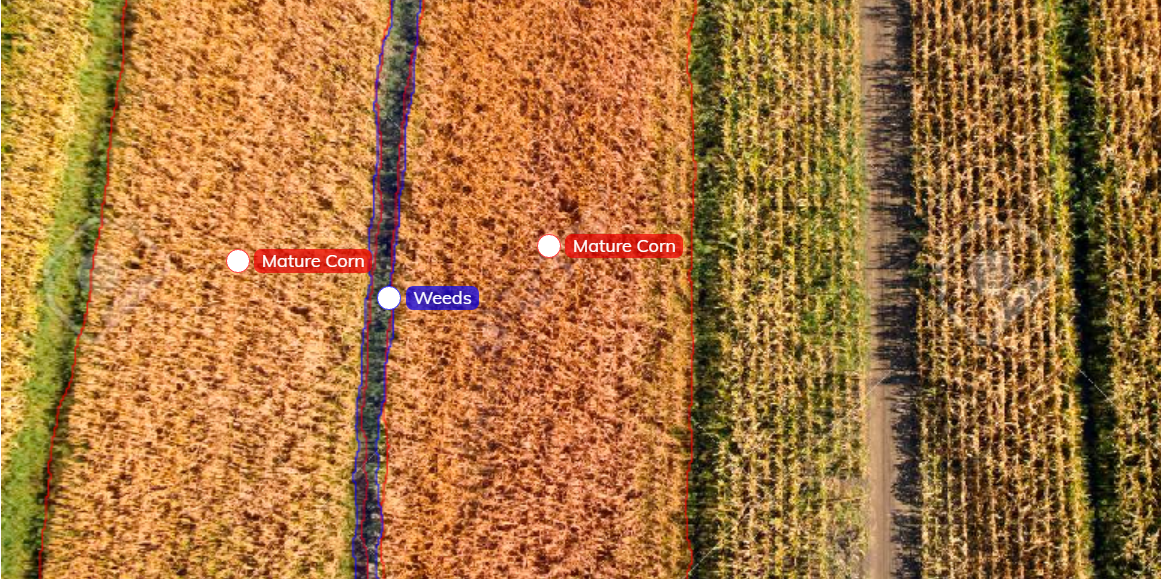 Intelligent sprayers aren’t the only AI getting into weeeding. There are other computer vision robots taking an even more direct approach to eliminating unwanted plants.
Now, spotting a weed in the same way that computer vision can spot an insect or oddly-behaving chicken doesn’t actually eliminate very much work for the farmer. To be of even greater help the AI needs to both find and remove the weed.
Being able to physically remove weeds not only saves the farmer quite a bit of work, but also reduces the need for herbicides and thus makes the whole farming operation much more environmentally friendly and sustainable.
Intelligent sprayers aren’t the only AI getting into weeeding. There are other computer vision robots taking an even more direct approach to eliminating unwanted plants.
Now, spotting a weed in the same way that computer vision can spot an insect or oddly-behaving chicken doesn’t actually eliminate very much work for the farmer. To be of even greater help the AI needs to both find and remove the weed.
Being able to physically remove weeds not only saves the farmer quite a bit of work, but also reduces the need for herbicides and thus makes the whole farming operation much more environmentally friendly and sustainable. Intelligent pesticide application
 By now, farmers are well aware that the application of pesticides is ripe for optimization. Unfortunately, both manual and automated application processes have notable limitations.
Applying pesticides manually offers increased precision in targeting specific areas, though it might be slow and difficult work. Automated pesticide spraying is quicker and less labor-intensive, but often lacks accuracy leading to environment contamination.
AI-powered drones provide the best advantages of each approach while avoiding their drawbacks. Drones use computer vision to determine the amount of pesticide to be sprayed on each area. While still in infancy, this technology is rapidly becoming more precise.
By now, farmers are well aware that the application of pesticides is ripe for optimization. Unfortunately, both manual and automated application processes have notable limitations.
Applying pesticides manually offers increased precision in targeting specific areas, though it might be slow and difficult work. Automated pesticide spraying is quicker and less labor-intensive, but often lacks accuracy leading to environment contamination.
AI-powered drones provide the best advantages of each approach while avoiding their drawbacks. Drones use computer vision to determine the amount of pesticide to be sprayed on each area. While still in infancy, this technology is rapidly becoming more precise.
Sorting harvested produce
 AI is not only useful for identifying potential issues with crops while they’re growing. It also has a role to play after produce has been harvested. Most sorting processes are traditionally carried out manually however AI can sort produce more accurately.
Computer vision can detect pests as well as disease in harvested crops. What’s more, it can grade produce based on its shape, size, and color. This enables farmers to quickly separate produce into categories — for example, to sell to different customers at different prices. In comparison, traditional manual sorting methods can be painstakingly labor-intensive.
AI is not only useful for identifying potential issues with crops while they’re growing. It also has a role to play after produce has been harvested. Most sorting processes are traditionally carried out manually however AI can sort produce more accurately.
Computer vision can detect pests as well as disease in harvested crops. What’s more, it can grade produce based on its shape, size, and color. This enables farmers to quickly separate produce into categories — for example, to sell to different customers at different prices. In comparison, traditional manual sorting methods can be painstakingly labor-intensive. 